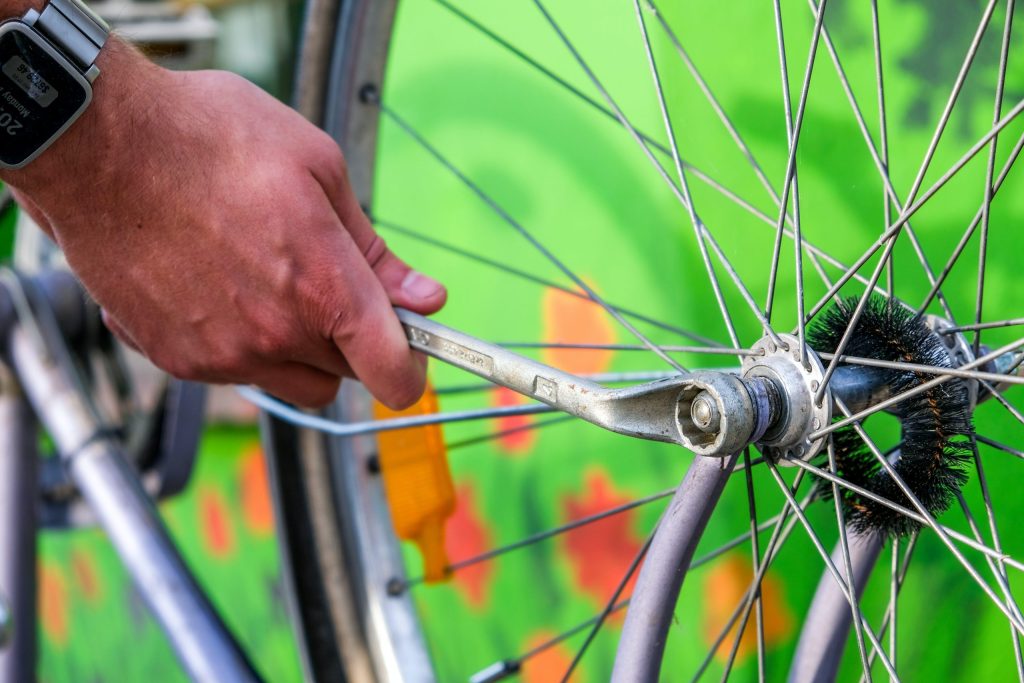Essential Tips for E-Bike Maintenance
E-Bike Maintenance plays a critical role in the operational efficiency and lifespan. This involves routine checks on essential components such as the battery, brakes, tires and overall cleanliness and lubrication of the bike.
It is through proper care and maintenance that one can prolong the life of their e-bike, prevent avoidable malfunctions, and vastly improve its performance. By adhering to recommended maintenance practices, e-bike owners can save time, money, and potential distress while enhancing their biking experience.
Understanding the Basics of E-Bikes
Components of E-Bikes
E-bikes or electric bikes are composed of several key components that differentiate them from traditional bicycles.
These include a small electric motor, a rechargeable battery, a drivetrain, and a controller ingrained in the handlebar allowing riders to adjust the level of motor assistance. Some e-bikes also feature an LCD display to showcase information like battery life, speed, and distance.
READ MORE: E-Bike Motors: All You need to know about them
Different Types of E-Bikes
There are three main types of e-bikes: commuter, mountain, and road e-bikes.
Commuter e-bikes are designed for urban cycling, short distances, and daily commuting.
Mountain e-bikes have better suspension and are fitted with larger tires suitable for off-road trails, and lastly,
Road e-bikes, mimicking traditional road bikes, are perfect for long-distance cycling.
Essential E-bike Maintenance Tips
Battery Care Tips
When it comes to e-bike maintenance, battery care is paramount. Always ensure the battery is clean and dry, and when charging, use the charger and adapter provided by the manufacturer.
Here are some tips to care for your e-bike battery:
1. Check your battery percentage before every ride and charge it regularly, preferably after every ride unless you are still over 90% charge.
2. Clean your battery at least once a month with proper maintenance and unplug the charger from the battery as soon as it is done charging.
3. Store your battery in a cool space with a battery percentage of 40 to 80 and avoid exposing it to extreme temperatures or moisture.
4. Ride smoothly and use the modes according to your needs and terrain.
5. Don’t let your e-bike battery fall or get damaged by any inconvenience.
Following these tips will prolong your battery’s lifespan.
Brake Checks and Maintenance
Another crucial part of e-bike maintenance involves regularly checking and maintaining the bike’s brakes. Regularly inspect brake pads for wear and ensure the brake cables are properly lubricated.
Here are some tips to maintain your e-bike’s brakes:
1. Keep the brake fluid cylinder full: Whenever the level is low, you’re putting excess strain on the master brake cylinder and other components. And this will effect your pads, rotors and drums.
2. Perform regular inspections: Check for uneven pad wear, pits or scratches on the rotor, caliper rust and other defects. A regular check-up will keep your brakes in good condition.
3. Pay attention to dashboard lights: Newer e-bikes have a built-in “system status” check for brakes. If your brakes aren’t functioning properly, you may see a warning light on your dashboard.
4. Check the underbelly: Inspect the brake lines for leaks and proper hydraulic pressure.
Always replace worn out brake pads and fix any loose cables promptly to maintain optimal brake performance.
Following a maintenance schedule ensures that your e-bike’s brakes are always in good condition.
Tire Pressure Checks
Checking tire pressure is also important in e-bike maintenance. Under or over-inflated tires reduce the bike’s performance and can lead to premature tire wear or punctures.
Here are some tips to check your e-bike’s tire pressure:
1. Check tire pressure regularly: You should check tire pressure every time you fill up or every 30 days, or when the temperature changes suddenly.
2. Use a tire pressure gauge: To determine your tire pressure, use a stick gauge and push it down on the valve stem. If you’ve done that correctly, the measuring stick inside should pop out, showing you the PSI readings.
2. Use a tire pressure gauge: To determine your tire pressure with the stick gauge, push the gauge down on the valve stem. Then, the measuring stick inside will pop out, showing you the PSI readings.
3. Check tire pressure when tires are cold: Proper tire inflation should be checked when the tires haven’t been driven on for several hours and have had time to cool down.
4. Compare readings with recommended pressure level: Compare the reading with the recommended pressure level and adjust accordingly.
5. Replace caps after checking tire pressure: Repeat the process for all tires and replace the caps.
And the optimal pressure is often inscribed on the sidewall of the tire.
Handling Malfunctions and Repairs
Troubleshooting Common E-Bike Problems
Like any machine, e-bikes can face various problems including a non-responsive motor, premature battery drain, or lack of power.
These concerns often result from faulty connections, a discharged battery, or software glitches. Reading through your bike’s user manual is a good start when troubleshooting these problems.
When to Seek Professional Help
While there are maintenance tasks and minor repairs e-bike users can handle on their own, some circumstances call for professional intervention.
If the bike experiences continued reduced performance or consistent technical problems,
it’s advisable to seek professional help. Bike shops also offer services like full check-ups, motor servicing, and diagnostic tests, which are crucial in maintaining your e-bike.
In summary, the growing popularity of e-bikes makes it essential for users to understand e-bike maintenance. Regular care, from battery maintenance to routine checks on brakes and tires, is the foundation of a high-performing e-bike.
Don’t shy away from seeking professional help when necessary to ensure the longevity and optimal function of your e-bike.
IN CONCLUSION
From simple routines like battery care to more complex tasks such as brake checks and tire pressure adjustments, every bit of maintenance potentially wards off a range of common malfunctions and ensures the bike is always in optimal condition.
This simple yet consistent care goes a long way in empowering e-bike riders to handle minor troubleshooting and repairs, saving lots of time and money in the long run.
The Importance of E-Bike Maintenance: How to Keep Your Bike Safe and Reliable





